If you want to know about the ramp design or staircase design or dimensions and space requirements, please click the link above.
Circulation in architecture refers to the movement of people within a building or structure, including the paths, spaces, and means of access used to get from one place to another. This includes hallways, elevators, stairs, ramps, and doorways, as well as the design and arrangement of these elements to create an efficient and functional flow of traffic.
Good circulation is an important aspect of architectural design, as it can affect the safety, accessibility, and comfort of the building’s occupants.
Circulation in architecture can be defined as Circulation within spatial unit, Vertical circulation and Horizontal Circulation. Circulation plays an important role in our emotion towards the building, be it comfort or security. A building is considered to have good circulation if the progress from where we’ve been to where we are going is subconscious and predictable.
1) Circulation within spatial units
Circulation within spatial units refers to the movement of people, goods, information, and resources within a defined area or space.
- A spatial unit is a module of space that is controlled for an exclusive activity – human or mechanical. A ‘room’ can be seen as a spatial unit.
- Spatial units are designed for an envisaged activity – an activity that the designer feels are required for that context. Thus, a drawing room, a bedroom an operation theater is designed for an envisaged activity.
i) Factors that affect the usage of interior spaces
- Activity typology
- User behavior patterns
- Furniture
- Movable
- Fixed
- Fenestrations
- Doors
- Windows
- Environmental conditions
- Light
- Ventilation
- Acoustics
- Inside outside relationship
- View
- Movement
ii) Meaning of Circulation
To move anything including the human body. The space required to do the above-mentioned activity.
iii) Need of Circulation in interior spaces
- All human activity needs movement
- Of the limbs
- Of the body
- Usage of furniture requires space around it for it to be used efficiently. Objects have to be moved around for their utilization. To add aesthetic value to the space.
iv) Placement of movable furniture and its effect on circulation
- Movable furniture is that which can be shifted or moved such as chairs, tables, beds etc.
- All such furniture occupies space. All furniture requires space around it.
- Different furniture types will require different spatial configurations for its efficient usage. Certain furniture types are intrinsically related to each other like a bed and bedside table.
v) Placement of fixed furniture and its effect on circulation
- Fixed furniture or built in furniture is that which can not be moved or shifted such as wardrobes, cabinets, toilet fixtures etc.
- All these furniture/fixtures require space to be accessed and to be used efficiently.
- Some of these need additional space for operations, like the space required for the opening of the wardrobe shutters.
vi) Location of fenestrations and their effect on circulation in interior spaces
- Doors will require appropriate space for effective utilization of the interior space.
- If more than one, the doors will need effective connective space between them.
- Windows need space for operations and maintenance.
- Windows provide the view and the inside-outside relationships, so the placement of furniture and consequently the space required in front of a window has to be appropriate for that function.
vii) Interior space typologies
- Normally a space has an exclusive envisaged function – – – Bedroom, kitchen, classroom, office etc.
- Sometimes interior spaces can be organized for numerous purposes – – – Dining kitchen, Studio classroom, etc
- There could also be multipurpose spaces – – – College gymnasium cum theater, single room dwelling etc.
- Each space requires different furniture types and configurations for the efficient performance of the envisaged activity.
Examples of Circulation within spatial units
Most human functions require some kind of furniture. Specific functions require specific furniture. The space required around the space also depends on the kind of expression required from the space.
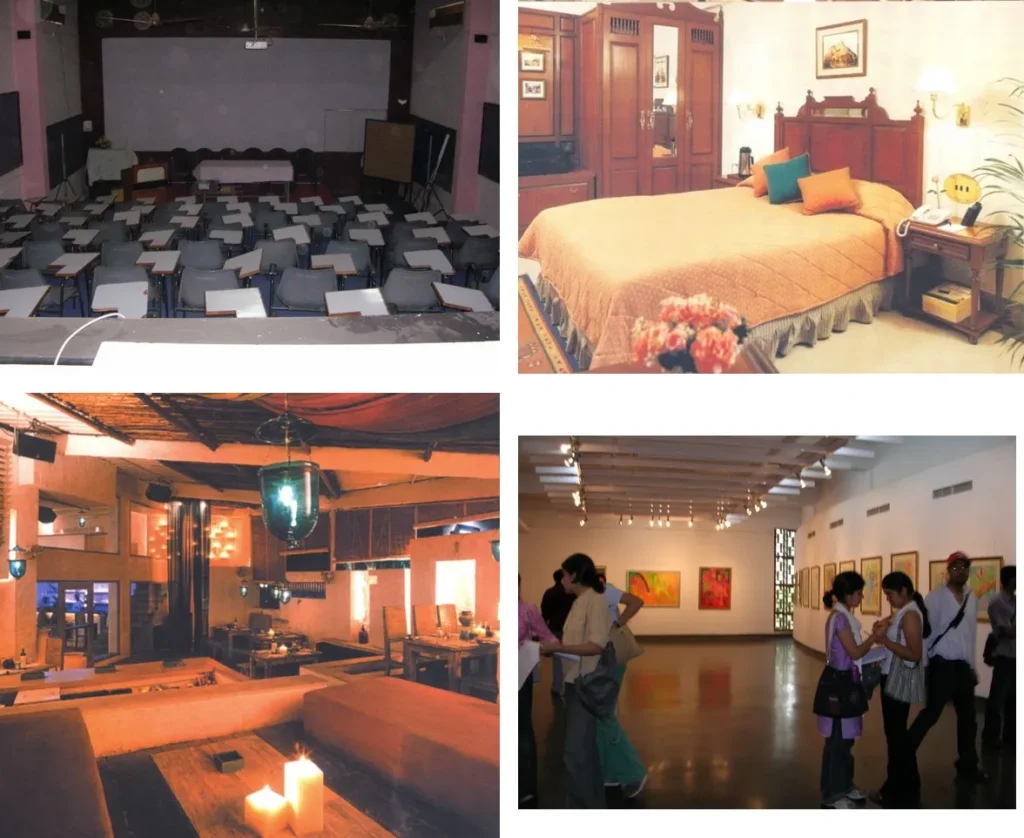

- The spaces around the furniture and the quality of light. See image below.
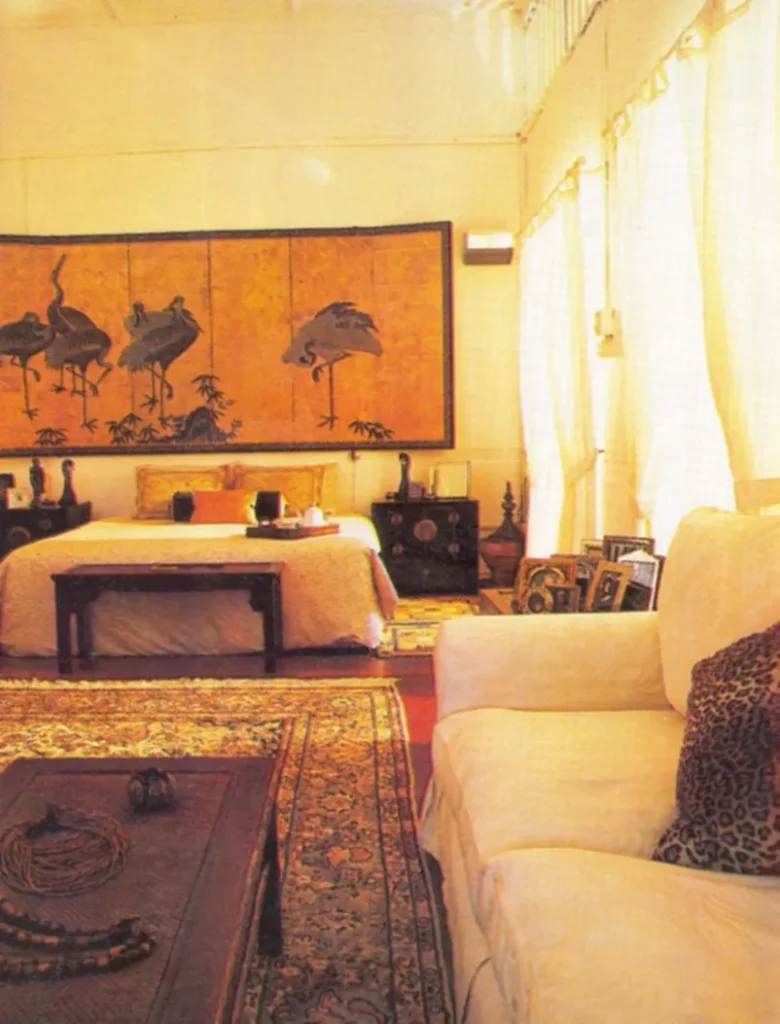
- The plans show the specific requirement of space around furniture for the effective use of space. See image below.

- The plans show the specific requirement of space around furniture for the effective use of space. See image below.
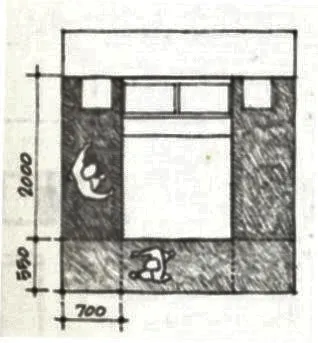
- The spaces around the furniture and the total visual effect because of the size of spaces left between the furniture. See image below.
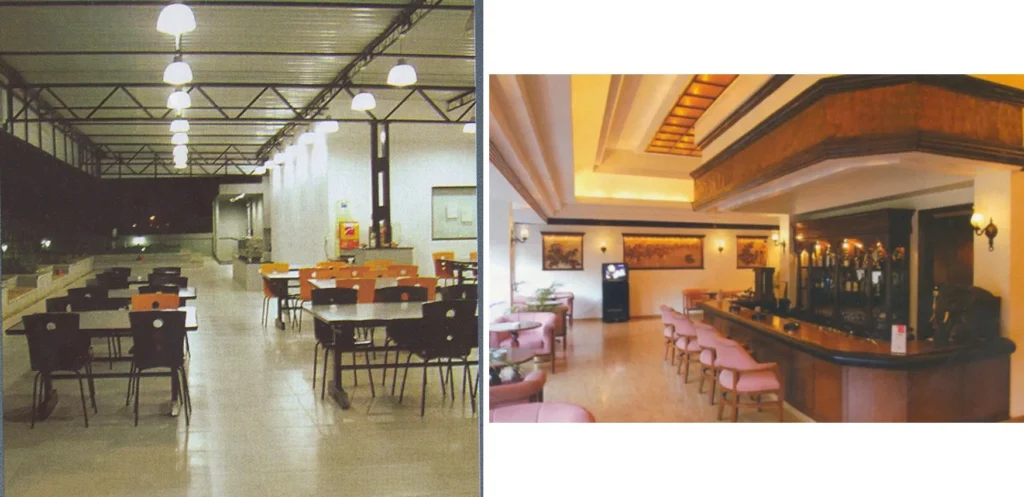
- The plan helps in defining spaces required around the furniture. See image below.
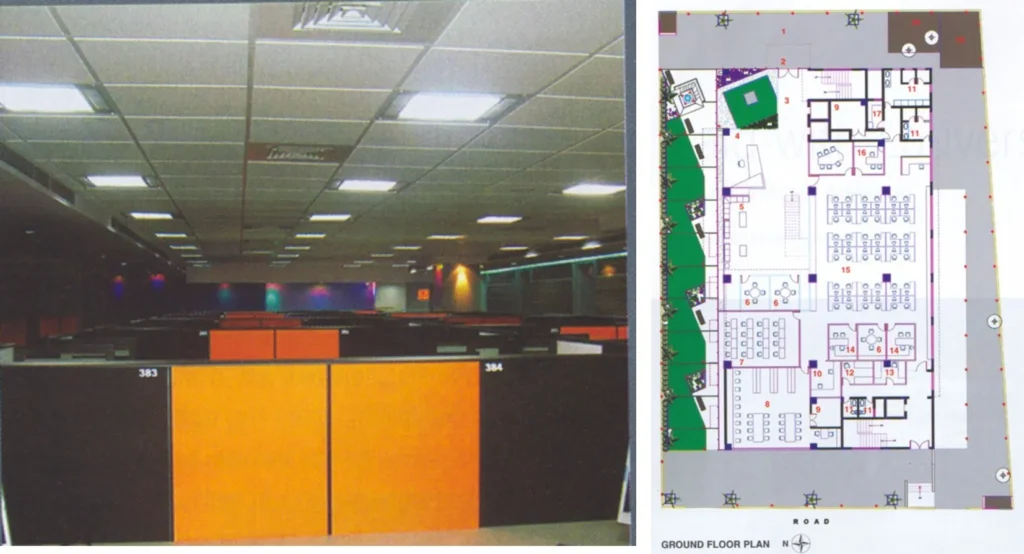
- The plan, when drawn on scale, is a medium for working out the spaces occupied by the furniture and the spaces required around it for the effective usage of both the space and the furniture. See image below.

- Different kinds of furniture require different kind of spaces. Spaces can be left to create special expressions in a spatial organization. See image below.
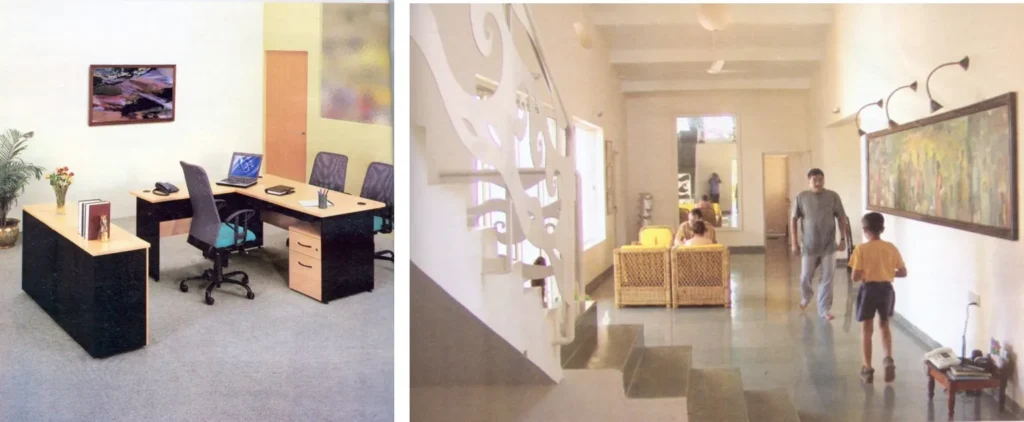
- Note the effect of fenestrations on the space. See image below

- Everything inserted in space will have a strong visual impact and will also effect the functionality of that space. See image below
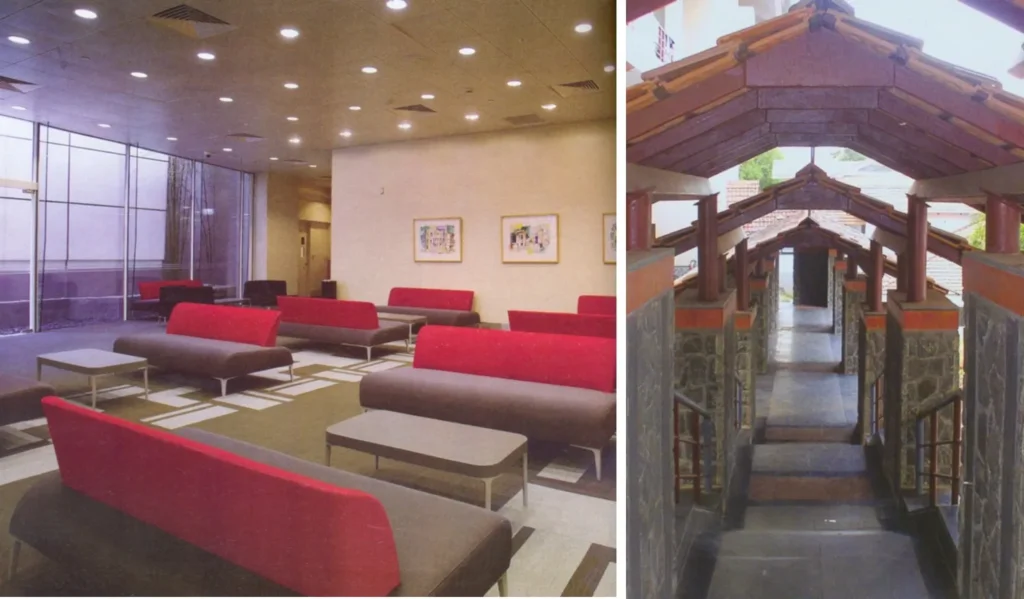
- Different expressions of placement of furniture. – – – Utilitarian – – – See image below
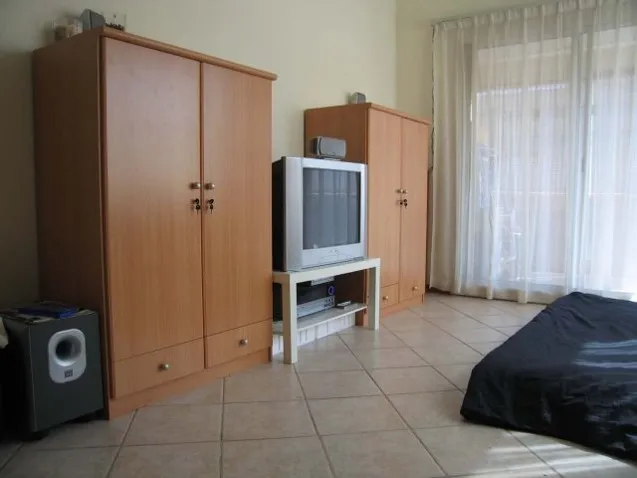
- Different expressions of placement of furniture. – – – Friendly – – – See image below

- Different expressions of placement of furniture. – – – Grand – – – See image below

- Different expressions of placement of furniture. – – – Crowded – – – See image below

Therefore, The factors that efficient usage of space within a spatial unit.
- Correct choice of furniture.
- Appropriate space around the furniture
- Suitable circulation space to access all furniture units.
- Suitable lighting and ventilation.
- Good view.
2) Horizontal Circulation
Horizontal circulation refers to the movement of people within a building or structure, typically on the same floor level. This type of circulation includes hallways, staircases, and doorways that allow occupants to move from one room or area to another within the building.
It also plays a role in safety by providing multiple exits in case of emergencies. Good horizontal circulation design considers the size and layout of rooms, the flow of traffic, and the overall building use, to ensure that occupants can move around the building efficiently and safely.
Different types of horizontal circulation systems are:
- Corridors
- Verandahs
- Vestibules
- Passages
- Lobbies
- Entrance halls
- Lounges
i) Circulation spaces as connectors
- All spaces in a spatial organization need to be connected. No functional space exists in isolation. Spaces will be either directly or indirectly connected.
- Through a door.
- Through a corridor, lobby, passage etc.
- Such spaces have their own unique character.
ii) Character of horizontal circulation spaces
- These, as corridors, are linear spaces usually meant exclusively for movement.
- These, as lobbies and foyers, also allow the possibility of group standing beside movement.
- All these spaces need to be directional, environmentally sound and provide interesting visual experiences in movement.
iii) Hierarchy of circulation spaces
- This will entail an organization of spatial order that accommodates the changing situations of movement:
- Transition of vehicular to pedestrian – porch
- Transition from outside to inside – entrance verandah
- Transition to the inside – entrance space
- Movement to different spatial units – corridors, passages etc.
- Transition from the outside uncovered to the covered but not enclosed to the covered and partially enclosed to the totally covered and totally enclosed.
iv) Physical and Metaphysical facets of circulation spaces
- These need to be of appropriate dimensions depending on the volume of traffic and movement of objects.
- There needs to be ample light and ventilation in such spaces.
- There needs to be introduced some sense of visual excitement in such spaces by
- Change of volume
- Change of Color
- Change of Texture
- Addition of paintings etc.
- Change of light
- Change of finishes
- Walking in such spaces should not be “boring”.
Examples of Horizontal circulation
- The uncovered unenclosed circulation space. And the feeling of invitation in this space. — See image below
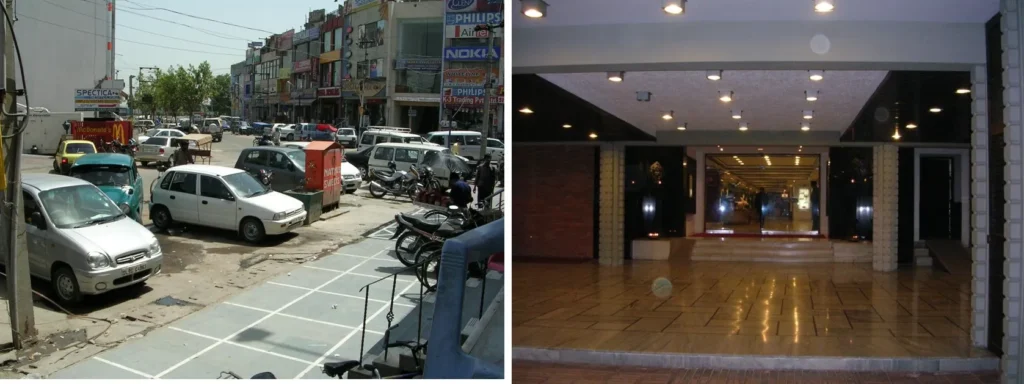
- The linear nature of the corridor gives direction. – – – See image below
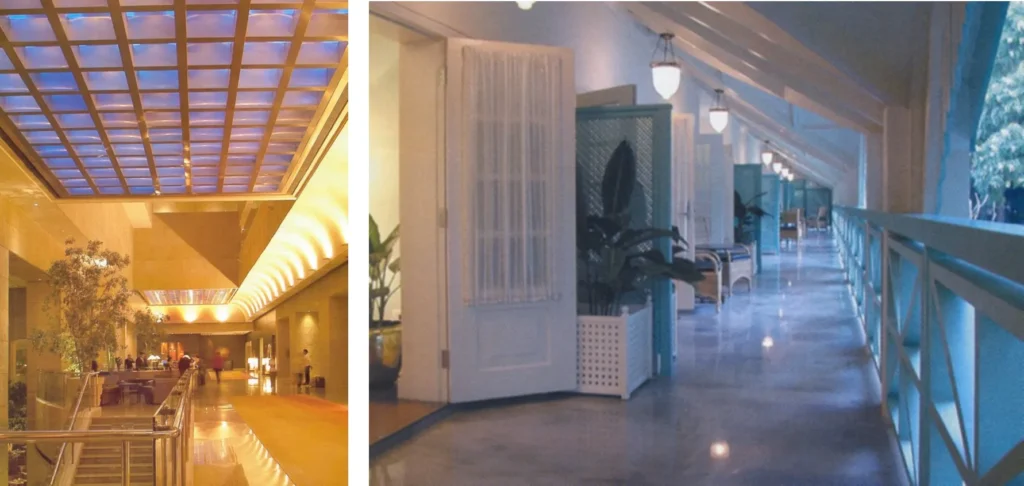
- A porch and an entrance space. – – – See image below
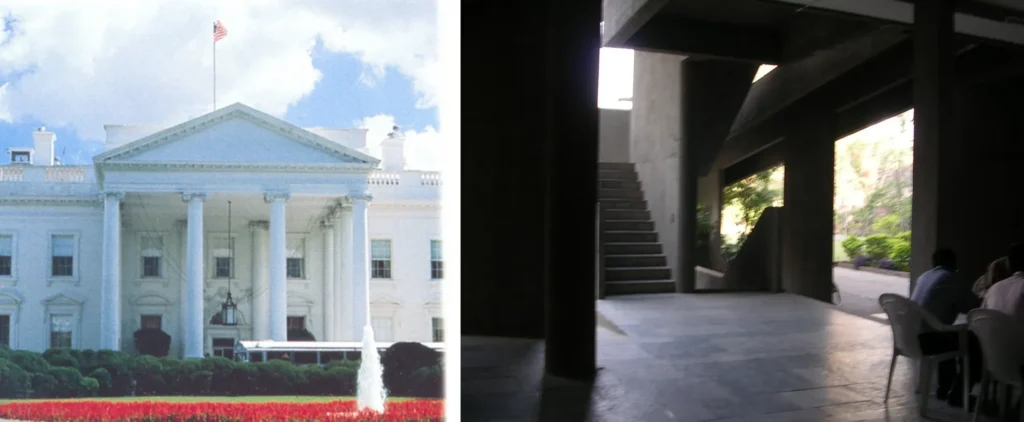
- An entrance spaces. And a circulation cum exhibition space. – – – See image below
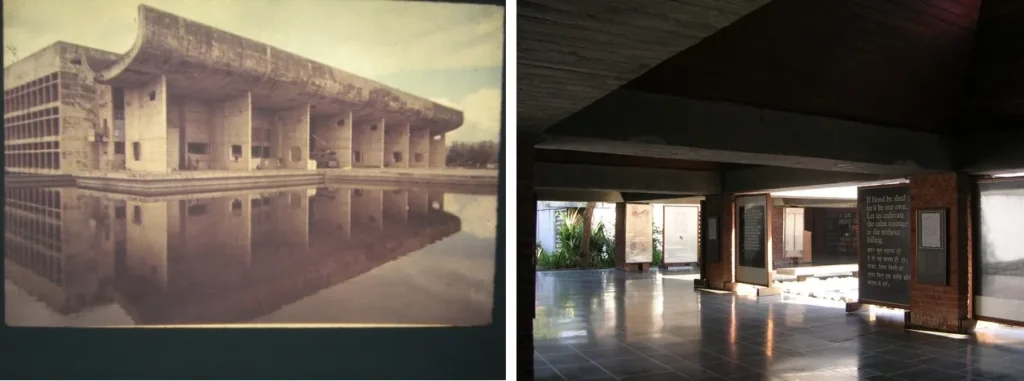
- A dull corridor – – – See image below

- A modern and a traditional circulation space. – – – See image below

- A traditional entrance and movement cum seating space a verandah. – – – See image below
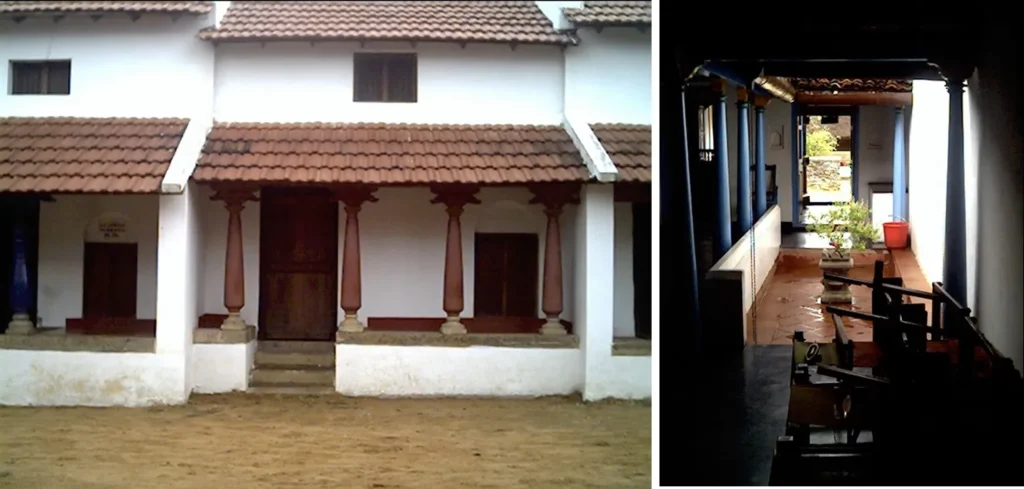
- Entrance and circulation spaces in a resort. – – – See image below
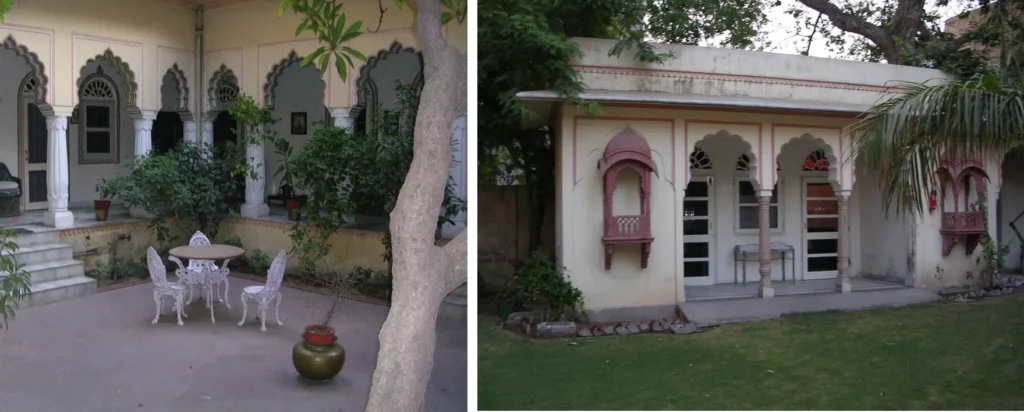
- Circulation spaces with different expressions in different situations – inside a hotel, around a courtyard and an entrance to a building in a resort. – – – See image below
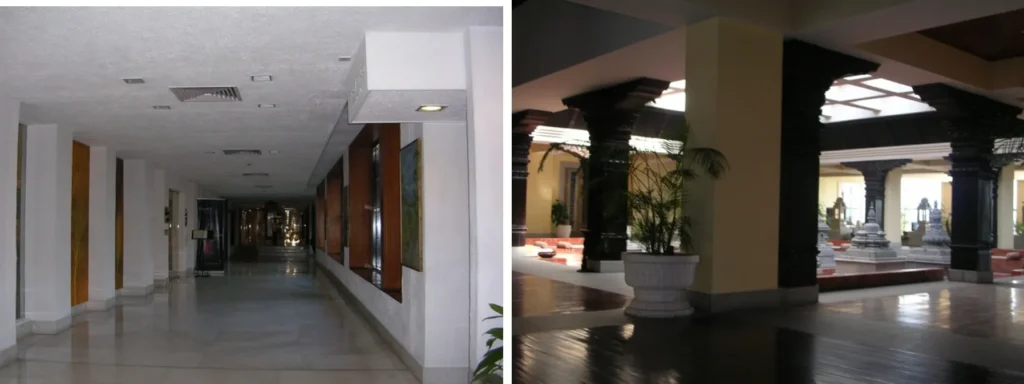
- The quality of spaces that have been designed for circulation exclusively. – – – See image below

- The porches and the entrance lobby belong to different buildings, but note their commonalities and differences. – – – See image below
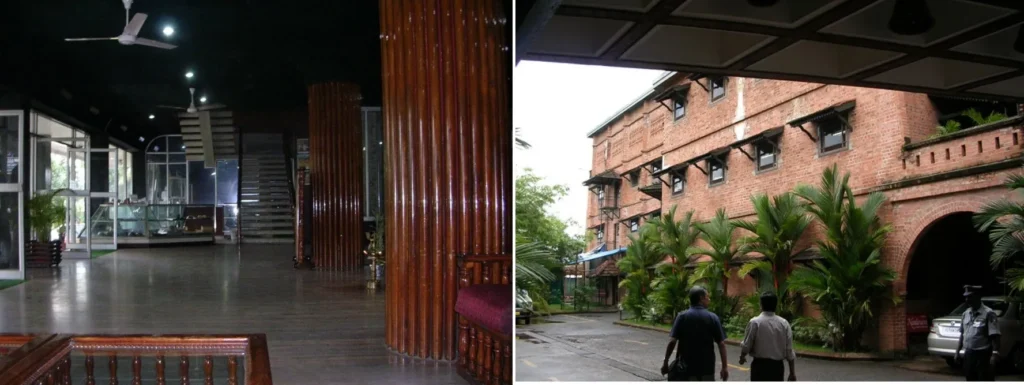
- All these spaces are meant for circulation but each one has a different quality of visual expression. – – – See image below
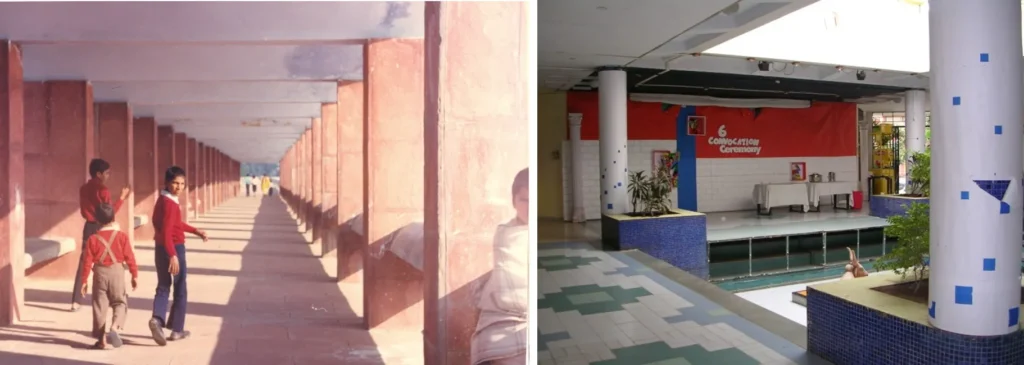
- All these spaces are meant for circulation but each one has a different quality of visual expression. – – – See image below

- The quality of the two corridors is so different. Try to analyze the reasons. – – – See image below

- These are both entrance spaces – – – See image below
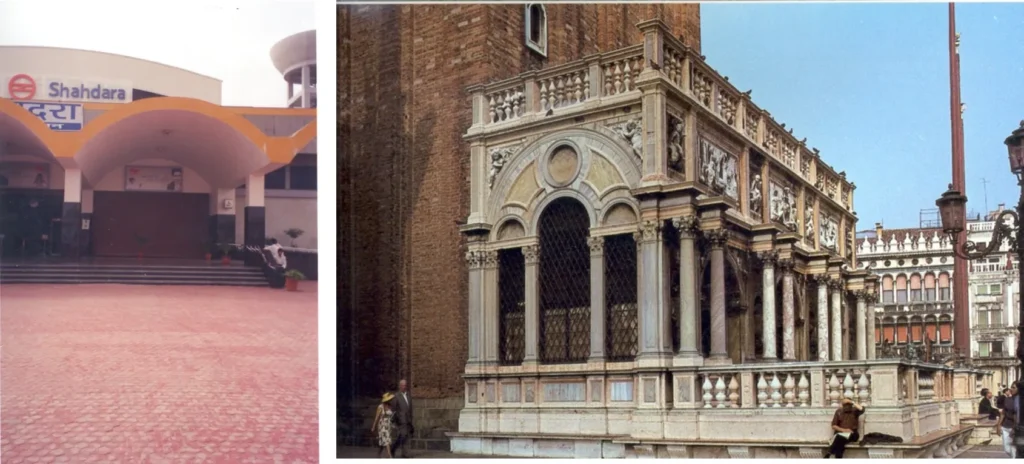
- Corridor spaces while being linear can be given different characters with the objects of enclosure. – – – See image below

- The entrance. And observe the corridor and its spatial quality – – – See image below
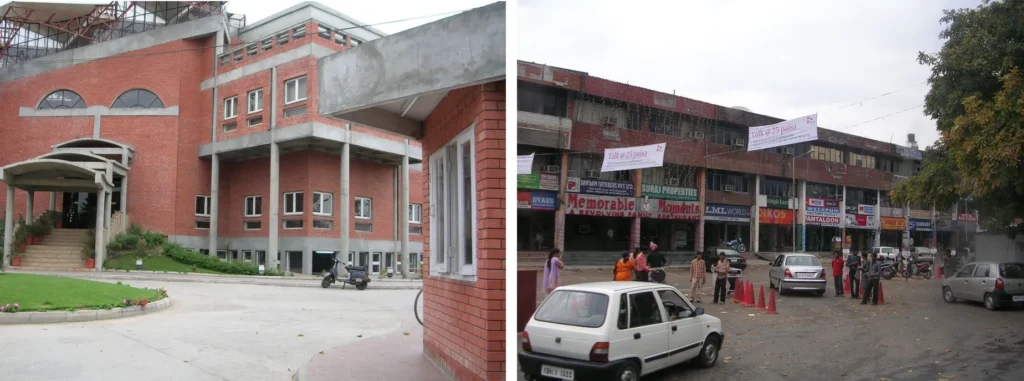
- How direction can be changed in the line of movement. – – – See image below
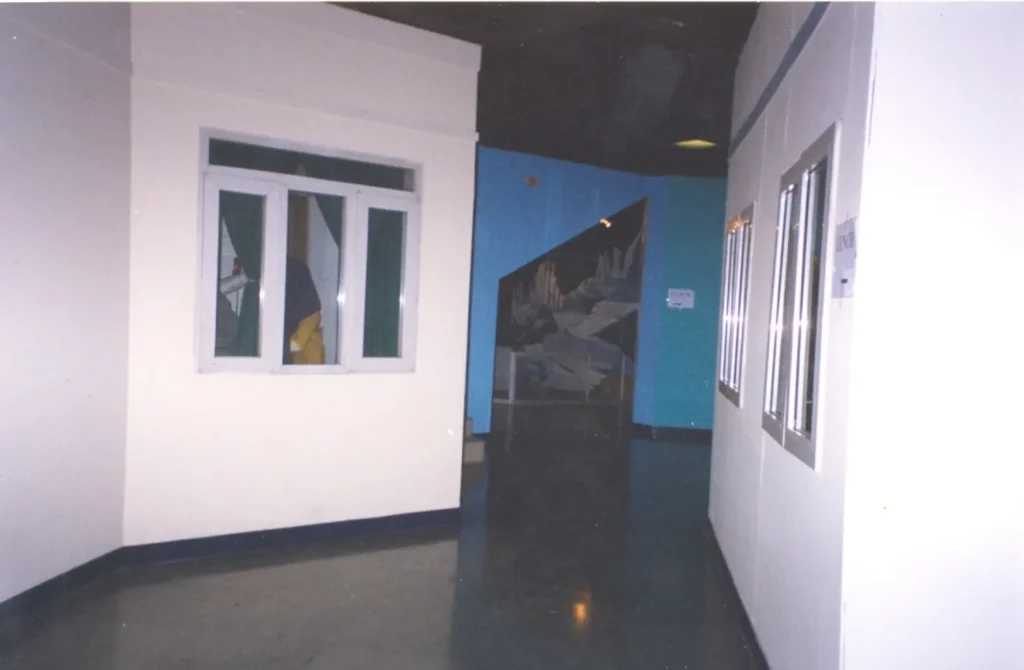
Conclusions
- Designated movement spaces are essential for the efficient working of a spatial organization.
- These movement spaces connect the outside to the inside and also the internal spaces either directly or indirectly.
- There is a hierarchy to this spatial system.
- These spaces must be directional.
- These spaces should be of the appropriate size with respect to the function and also the expression that needs to be generated through these.
- These need to be environmentally sound i.e. from the viewpoint of light, sound and air.
- These spaces need to be made interesting visual and spatial experiences by introducing variety in the quality of the enclosing objects or environmentally.
3) Vertical Circulation
Vertical circulation refers to the movement of people within a building or structure between different floor levels, typically through the use of elevators, escalators, or stairs.
It is an essential component of building design and plays a crucial role in ensuring the functionality, accessibility, and safety of a building. Vertical circulation should be designed to accommodate the needs of all users, including those with disabilities, and to facilitate the flow of people and goods within the building.
Vertical circulation can be seen as the system by which men and material can be transferred or moved from one horizontal plane to another.
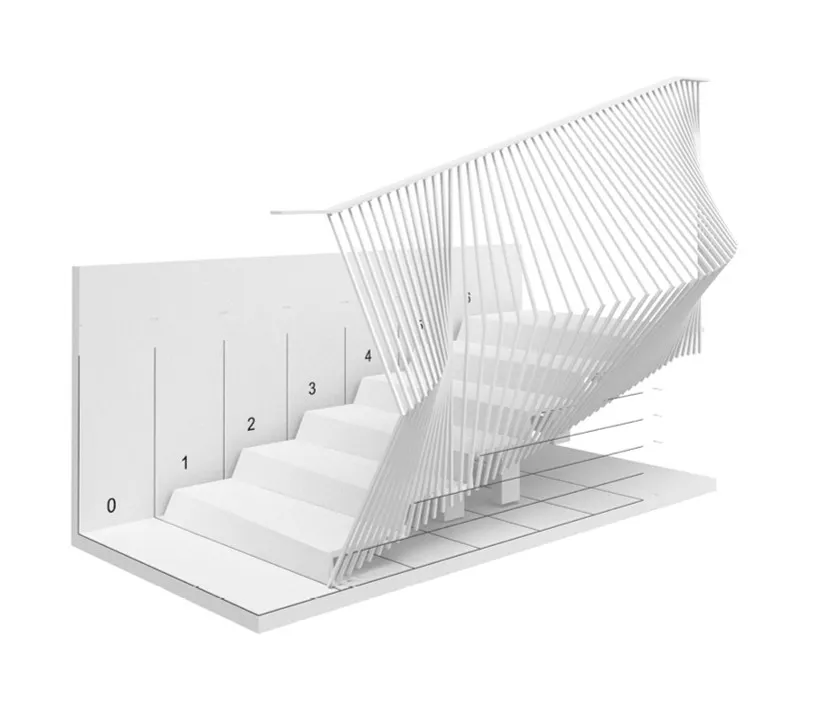
i) The Need of Vertical Circulation
Vertical Circulation becomes necessary because:
- There is the human desire to put some things on a pedestal — Building temples on hill tops suggests this desire.
- Scarcity of land whence space needs to be utilized in multiple planes.
- Man wishes to show his power — Indicated by the desire to build the tallest building.
ii) Need for studying Vertical Circulation
- Vertical circulation forms an essential part of most spatial organizations. — In some situations like high-rise buildings it forms a crucial part of the organization.
- This needs to be resolved for effective utilization of space.
- There is the need to appreciate the aesthetic content of these systems besides their functional importance.
iii) Historical context of vertical circulation
- Man has always put the gods and lords on a pedestal and needed vertical movement to reach the higher plane.

- Situations in which vertical circulation is required. – – – See image below
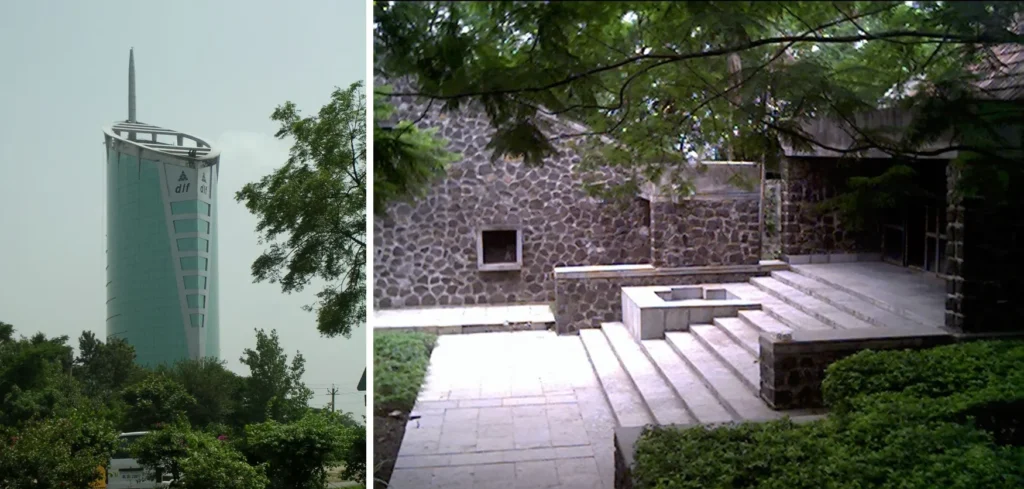
- Man wishes to build higher and higher to display his economic and technological power. – – – See image below
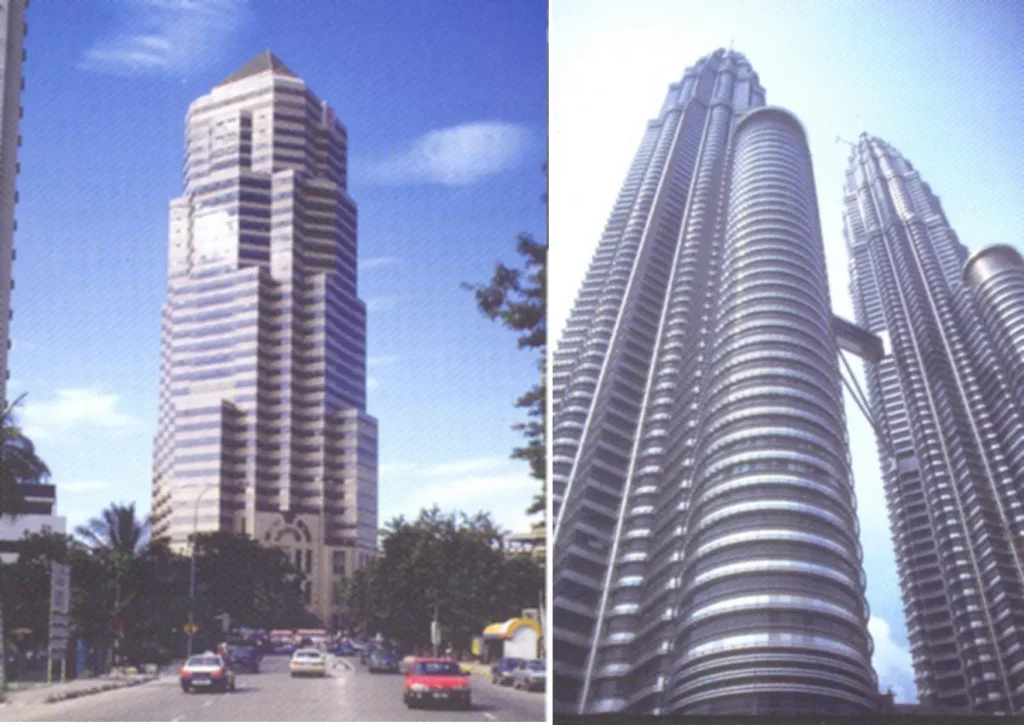
iv) The types of vertical Circulation elements
Manual
- Staircases
- Ramps
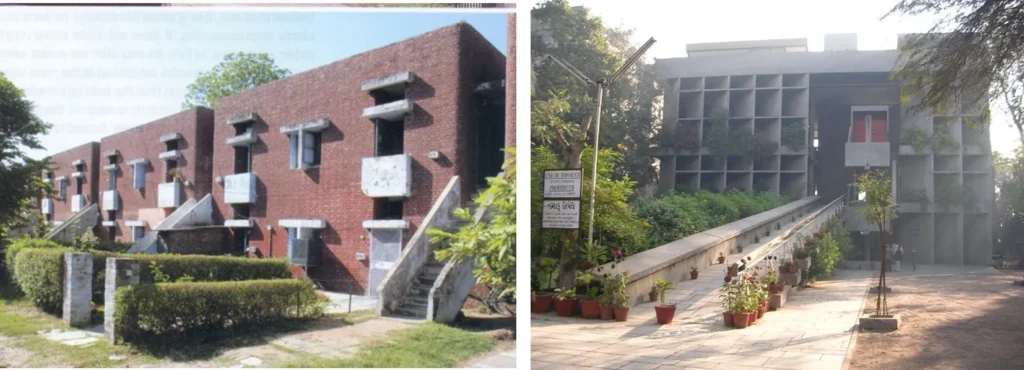
Mechanical
- Elevators
- Escalators
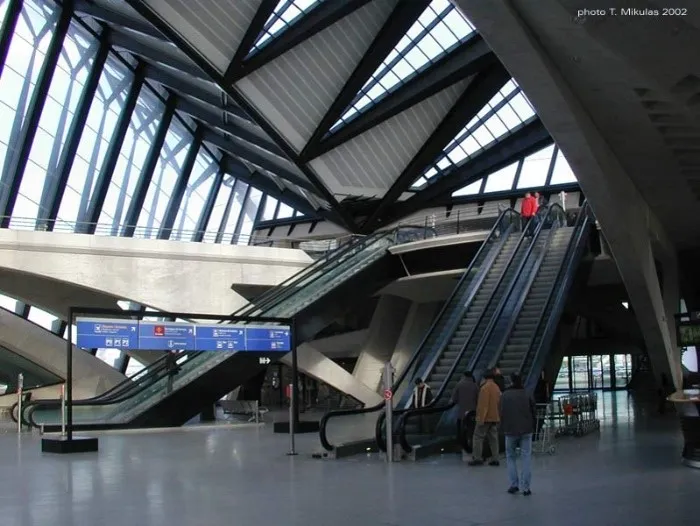
v) The Nature of Vertical Circulation elements
- Moving upward against gravity — Need for comfort conditions
- Moving downward with gravity — Need for incorporating safety
- Changing planes – Chances of falling — Need for incorporating safety
vi) The Character of Vertical Circulation elements
Staircases
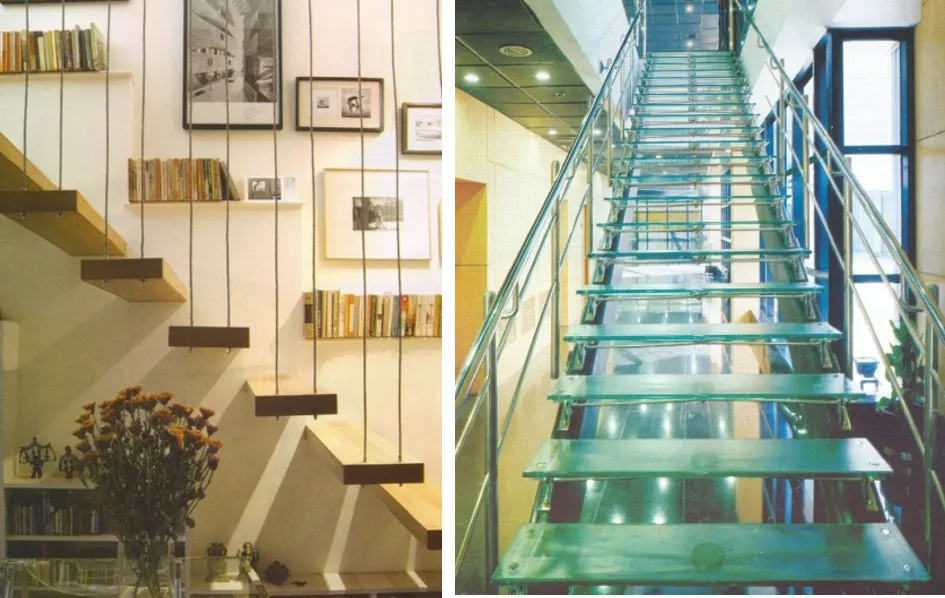
- Staggered, elevated horizontal strips
- Energy required for climbing
- A set of steps is called a flight
- Normally 10 – 12 steps given in a flight
- Horizontal walking space required after a flight
- Horizontal portion is called the tread
- Vertical between two treads is called a riser
- Handrail supported on balusters called the balustrade is required for —- Protection from falling and Giving additional support for climbing
- Different kinds of railings and stairs. – – – See image below

Ramps

- Horizontal circulation element tilted at an angle
- Can accommodate a large number of people so used for crowded places like cinema halls etc.
- Suitable for wheel chairs, stretchers etc. so useful in hospitals
- Should not have slippery surface
- Requires guard rails at sides for both protection and additional support
Escalators
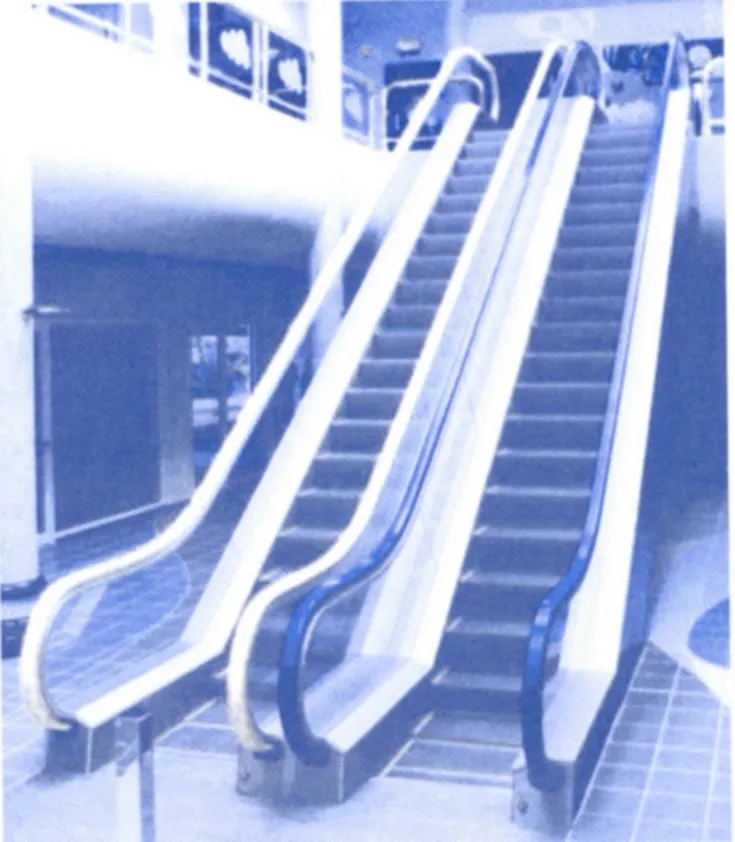
- Moving staircases
- Mechanized so no energy used
- No landing required
- Normally come in pairs
- Connect two large spaces
- Can carry a large volume of movement
- Requires constant maintenance
- Can be scary when connecting various subterranean levels — Environmental additions required
Elevators
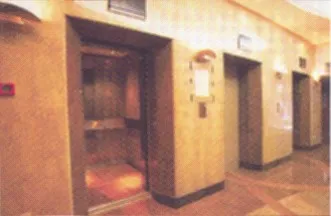
- A moving cage in a well
- Counterbalance used
- Motorized movement
- No human energy consumed
- Are now microprocessor controlled
- Require maintenance
- A group of elevators is called a bank
- Elevators system and externally installed – – – See image below
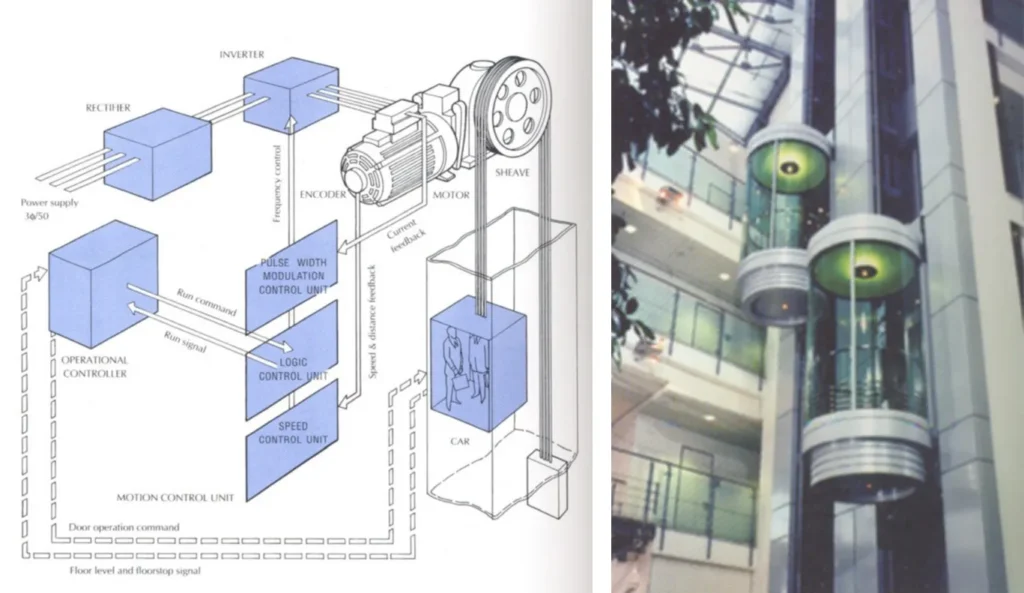
- These are used wherever there is a change of level or different floors have to be accessed. – – – See image below
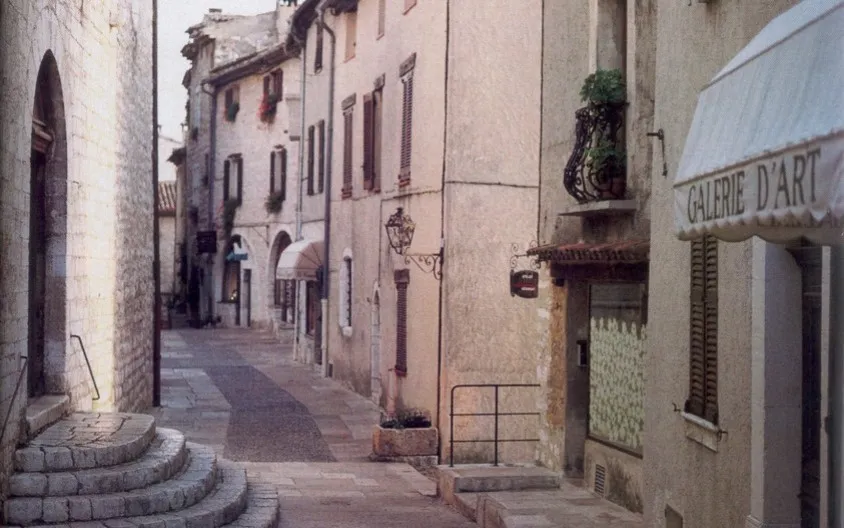
vii) The spatial requirements of different vertical circulation elements
- Staircase – Compact, leased space as a spiral, normally a U form.
- Ramp – Bulky, consumes large space, can be used as a sculpture externally.
- Elevator – Uses least space, can be used externally, requires a waiting space.
- Escalator – Usually between two large spaces, usually in an atrium, permits a changing view.
viii) The design constraints in selecting vertical circulation modes
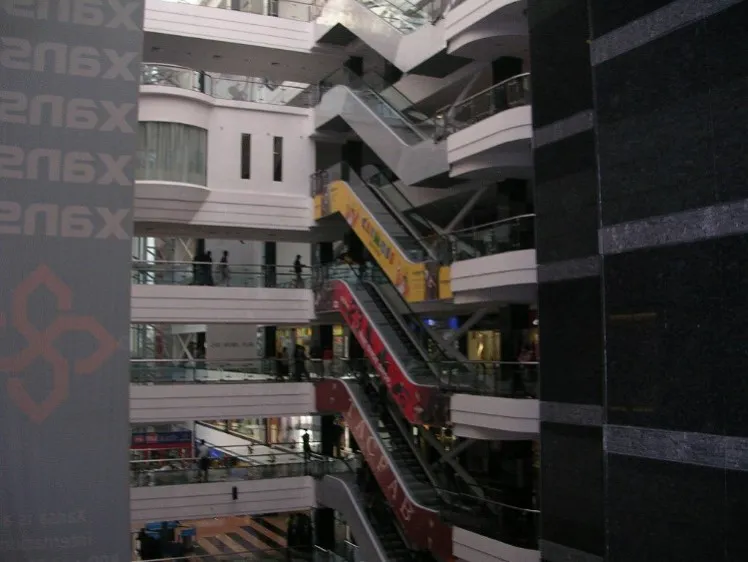
- Volume of traffic
- Space available
- Usage pattern — Wheeled movement requirement
- Height to be reached:
- Above 4 floors elevators are necessary
- Escalators work only between two floors but can be placed one above another
- Convenience required
ix) The physical and metaphysical qualities of vertical circulation elements
- Besides being physically safe it must look safe.
- The change from horizontal to vertical should be suggested in the third dimension.
x) The placement and positioning of Vertical circulation elements
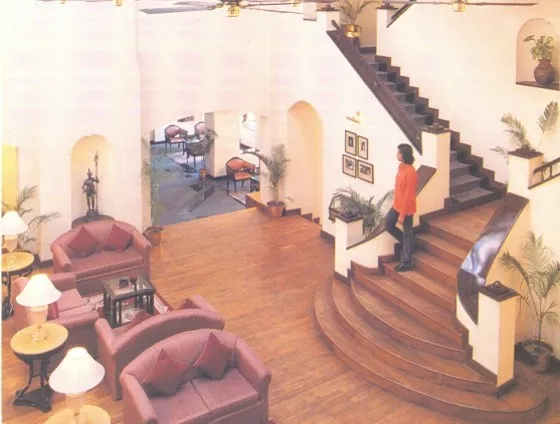
- In line of movement — At the most at right angles but not reverse
- As effective connectors
- Safety
- Convenience
- Use of element as sculpture
xi) Vertical circulation as a connecting system

- Vertical circulation will be between two horizontal circulations
- There will be horizontal circulation system preceding and succeeding a vertical circulation system.
Conclusions
- These fall between two horizontal systems but need to be differentiated.
- Safety is a major considerations.
- Convenience in the manual systems must be worked out effectively.
- Location must suit all floors.
- Forms need to be exploited.